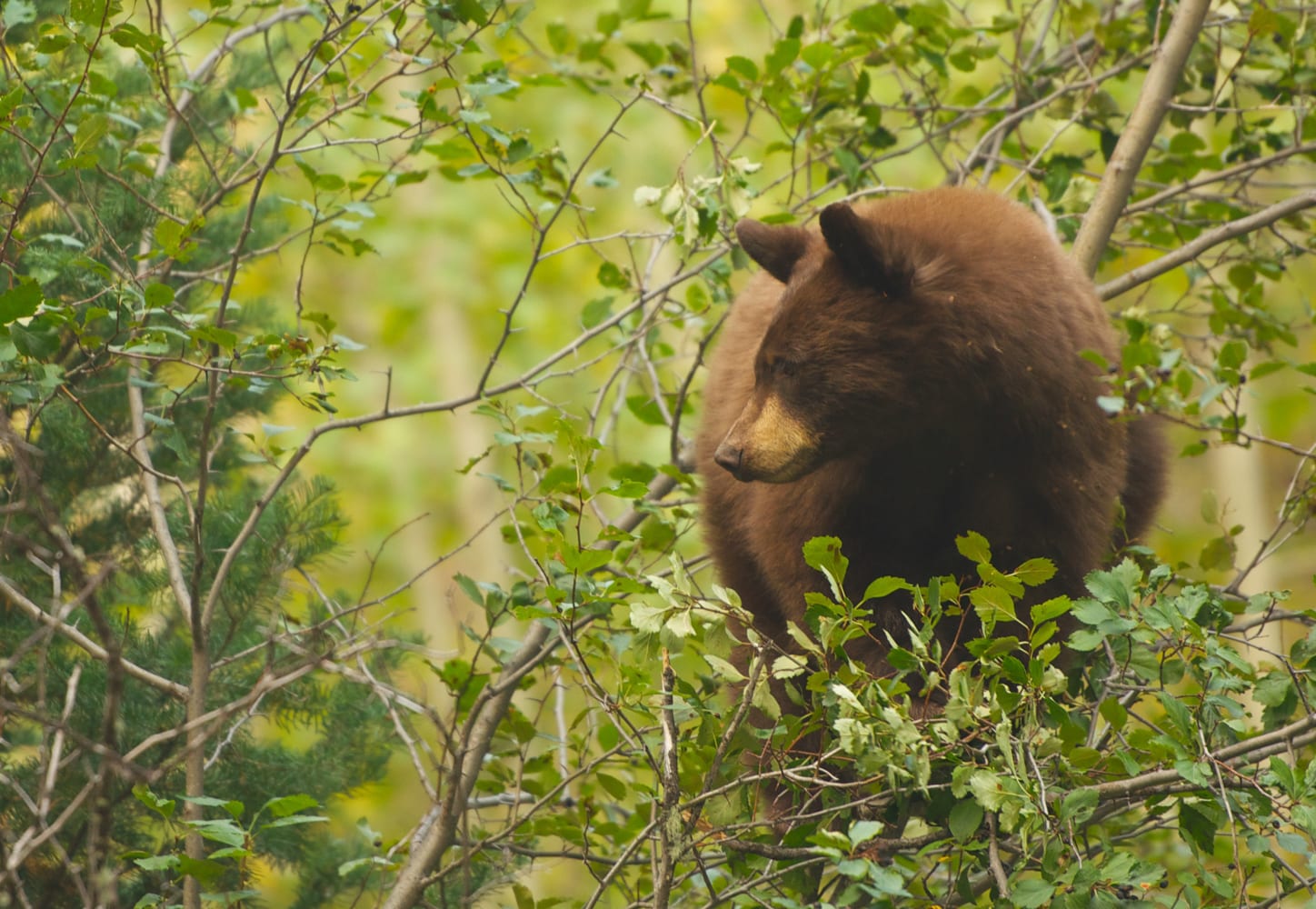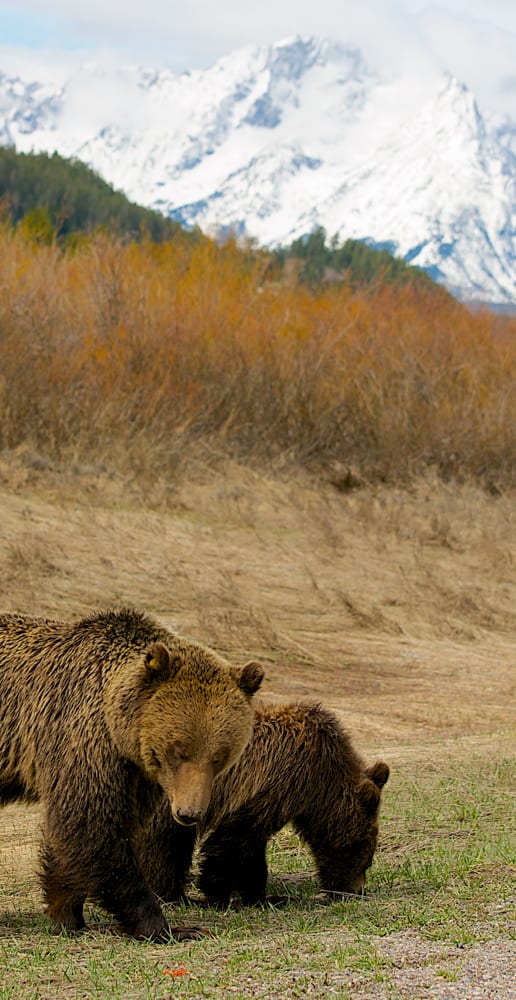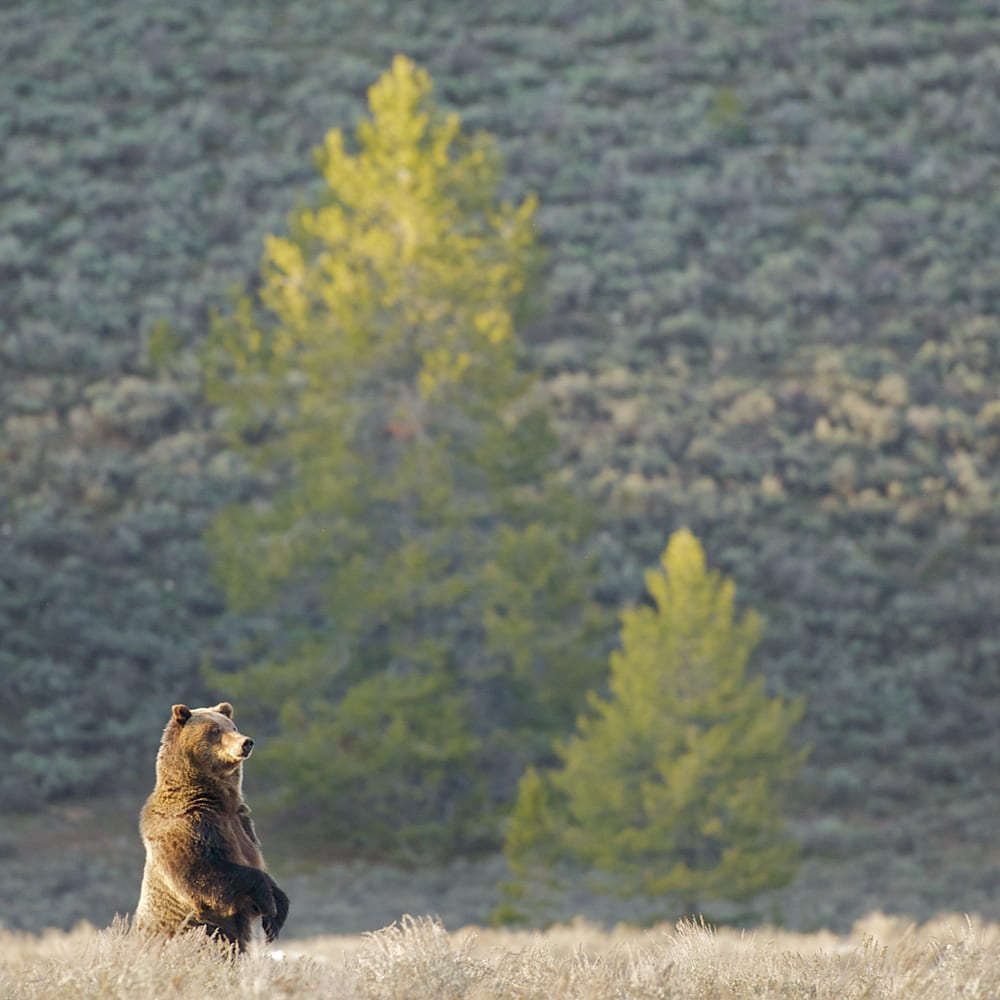The onset of spring in Jackson Hole is a tenuous thing. True, the lengthening daylight is undeniable. The weather even starts to warm up a little. Snow begins to melt under consistently sunnier skies, then freezes hard again overnight, making for fast morning skiing. But just when buds start to appear on the cold-bare willow and aspen branches, winter reminds us, with a sudden roaring storm and several inches of new snow, that it hasn’t quite released its hold. Lather, rinse, repeat. It is a cycle of continual uncertainty that can last from February to April, May, and even June some years.
However, there is one unquestionable sign that summer is indeed coming, and it’s a big one: the springtime emergence of bears. Jackson Hole and its national park neighbors are home to two species of bear – black and grizzly.

Contrary to popular understanding, bears do not actually hibernate during winter. Rather, they estivate, meaning that instead of entering the consistent deep torpor and significantly slowed metabolism of true hibernation, bears alternate between light and deep sleep and can awake to loud noises or sufficiently warm temperatures at any time during their estivation period. Typically, this period lasts from mid-December to mid-March. However, as with spring in the Rockies, don’t count on bears to stick to a set schedule, because what rules their activity is temperature. As winters trend toward becoming shorter and warmer, bears remain active in autumn as long as there is food to be had, and they emerge from their dens as soon as temperatures are warm enough to support their springtime search for much-needed nourishment. In fact, Yellowstone National Park reported its first confirmed report of spring bear activity this year on February 23 – a little over three weeks ahead of average.
 While bears’ seeming trend toward shorter estivation periods as a result of a warming climate is concerning in some regards, it also means visitors to Jackson Hole and Yellowstone and Grand Teton National Parks may have longer windows in which to spot a black or grizzly bear. Especially lucky visitors may even get a chance to witness a mama bear with cubs, such as our area’s famous Grizzly 399, who is renown for raising healthy broods of two to three cubs and showing them off to park visitors. Astoundingly, bear cubs, which are about the size of small puppies when they follow their mothers out of dens in the spring, can fit in the palm of a human hand at birth. Born while their mothers are in deep sleep, they spend the winter growing on her rich milk and, once they follow her out of the den, learning everything they can from mom about how to survive and thrive in the West.
While bears’ seeming trend toward shorter estivation periods as a result of a warming climate is concerning in some regards, it also means visitors to Jackson Hole and Yellowstone and Grand Teton National Parks may have longer windows in which to spot a black or grizzly bear. Especially lucky visitors may even get a chance to witness a mama bear with cubs, such as our area’s famous Grizzly 399, who is renown for raising healthy broods of two to three cubs and showing them off to park visitors. Astoundingly, bear cubs, which are about the size of small puppies when they follow their mothers out of dens in the spring, can fit in the palm of a human hand at birth. Born while their mothers are in deep sleep, they spend the winter growing on her rich milk and, once they follow her out of the den, learning everything they can from mom about how to survive and thrive in the West.
Seeing bears in the wild is truly an experience of a lifetime. For many of us, these remarkable mammals are the epitome of raw nature, a physical embodiment of some of the last great strongholds of wilderness that remain in the United States. And for many of us in Jackson Hole, their emergence from their winter dreams also signifies without a doubt that the seasons are changing and summer in the Greater Yellowstone Ecosystem is only a few short months away.


A big thank you to EcoTour Adventures of Jackson Hole for these great bear images! Click here to book a trip with EcoTour Adventures.
©Taylor Phillips
